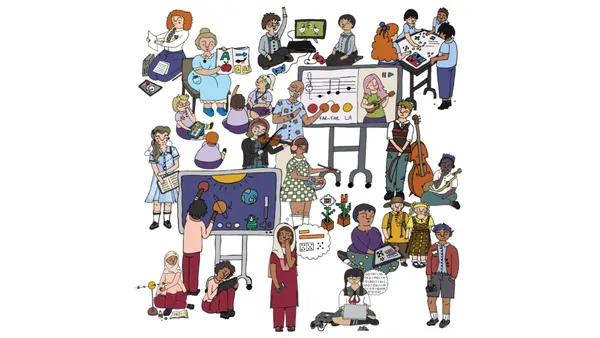Dive Brief:
-
When Langley Elementary, a Title I school in Washington, D.C., implemented the Conscious Discipline approach, its school culture improved significantly and suspension rates dropped, EdSurge reports, noting that the "top-to-bottom" reforms took around three years to yield positive results.
-
The school is no longer a place where punitive discipline is doled out, opting instead for “safe places,” calming colors and comfortable couches, with teachers practicing a trauma-informed approach that gives students a feeling a protection in the classroom.
-
The program includes training about “brain states" and the recognition that when students are in survival mode, their main goal is surviving rather than learning, "emotional states" and the students' need to feel cared for, and the learning level that occurs at the "executive state" once a student feels secure.
Dive Insight:
The Langley school reduced behavioral problems by recognizing that students were acting out because they didn’t feel safe. Once teachers created the safe environment that had been missing, students flourished. The Conscious Discipline approach is based on a body of evidence and research, but it also fits within a broader trend of restorative approaches to discipline that include improving learning environments so all can succeed.
A RAND Corp. study shows a restorative practices program in Pittsburgh Public Schools in the 2015-16 and 2016-17 school years reduced the number of student suspension days, especially among black students and in the elementary grades. The restorative approach focuses on improving and repairing relationships as a way to build stronger communities and decrease crime and antisocial behavior.
On the other hand, a survey from the conservative-leaning Thomas B. Fordham Institute found two-thirds of teachers don’t feel discipline is consistently enforced at their schools. In addition, 38% said fewer suspensions just reflected a higher tolerance for bad behavior rather than improvement. Suspension problems continue to plague black students at a much higher rate than their white peers, according to black teachers surveyed.
Knowing how the brain works is important for educators, Ron Hall, executive director of Valley Day School in Pennsylvania told Education Dive earlier this year, noting that discipline approaches that take into account neurological research and how the brain works are more effective in classroom management than punitive approaches that focus mostly on the negative.
Educators can use a number of preventative strategies to stop behavioral problems before they start, ranging from greeting students at the door and maintaining strong relationships with students throughout the school year to giving them plenty of reminders, optimizing seating by keeping chatty friends apart, and praising good behavior. Setting clear expectations and being consistent with rules from the start is also critical.












